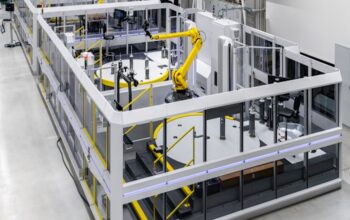Paperless manufacturing refers to the use of software-based electronic systems to monitor and enforce manufacturing production processes while capturing all information associated with production records. A Manufacturing Execution System Software replaces paper manufacturing processes with proactive manufacturing execution that delivers cost reductions and supports continuous improvement and lean initiatives. It enforces business rules to error-proof processes and provides a complete electronic audit trail of all manufacturing activity.
Paperless Manufacturing Processes
Paperless manufacturing processes provide the error-proofing and real-time visibility necessary to produce consistent product quality each and every time. Should product quality issues arise, electronic systems can quickly identify, contain, and remediate suspect products, either in process or in the field. Contextual data stored in electronic manufacturing systems yields information that can also help manufacturers optimize production processes, and support better decision-making with real-time dashboards that provide trending and analysis.
In paperless manufacturing, electronic records replace paper-based, manual ones. There are no “paper travelers” around the facility or across facilities. Paperless systems are typically integrated into higher-level systems like ERP to get bill of material information and orders to manage on the plant floor. Operators in paperless manufacturing facilities are presented with production tasks in properly ordered sequences (e.g., by priority, due date, or customer significance). Operators are given visual cues at their work cells to help enforce and speed proper action. Drawings, graphics, and standard operating procedures are viewed online, ensuring that workers are working from their most current version. Paperless systems not only prevent errors, they provide real-time alerts when issues arise. As manufacturers are delivering to increasingly small and volatile windows to market, the fact that paperless manufacturing processes eliminate the need for in-process manufacturing reviews and dramatically speed (i.e. reduces) final review and release time is a competitive advantage that may yield better customer satisfaction not to mention the opportunity to recognize revenue faster.
A common misperception of paperless manufacturing is that it is simply “paper-on-glass,” digital versions of paper documents or smart PDF files. While these elements may exist in a paperless manufacturing system, the primary value provided by paperless manufacturing comes from its ability to error-proof operations while simultaneously capturing, storing, and displaying all manufacturing information in real time. This provides visibility of operations across the manufacturing enterprise while also enforcing the proper procedures at the plant level to eliminate manufacturing errors and assure instant, accurate, and easily accessible documentation to rapidly meet audit and regulatory compliance needs. Paperless manufacturing systems “self-audit” while monitoring and enforcing production processes, eliminating the time and risk involved in traditional manual documentation processes.
Manufacturers in virtually all sectors have been made less efficient by paper-based processes.
The problem with paper exists in multiple forms
From a documentation perspective, there is a magnitude greater opportunity for errors with paper-based systems. Consider the complexity of capturing records. Documentation is a collection of paperwork associated with operations performed, multiplied times the number of lines involved, the number of plants in the enterprise, and the amount of data collected. Even if paper-based records could be executed with 99.5 percent accuracy— not a strong likelihood in the real manufacturing world— documentation errors for a company will still accumulate to tens of thousands. Studies show that manufacturers will confirm that the accuracy of manual, paper-based is well below 99.5 percent. With today’s paperless manufacturing systems, there are zero documentation errors.
From a quality perspective, manual paper-based systems simply lack the ability to adequately prevent errors at each and every step of operations. Consider all the steps involved in the manufacturing operations: Are the machines qualified? Is the procedure correct? Have the operators been trained? Has all relevant data been collected? Answering these questions strains the effectiveness of paper-based systems, which is why, in many manufacturing sectors, quality is achieved by ‘brute force’ with redundant checks and rechecks since you cannot rely solely on paper systems.
From a cost perspective, paper-based processes simply add overhead (e.g., paper, labor) and non-value-add time. Their lack of effectiveness is manifested across operations in the form of waste, lower yields, and latency that slows product development and to-market.
By automatically controlling operations across the enterprise— ensuring that operators and machines are right for the application and properly certified, that material issue is controlled in real-time, that all pertinent data is captured in real-time, and that procedures and enforced at the point of execution— paperless manufacturing execution systems (MES) eliminate these issues. The result is a more predictable manufacturing output.
Paperless manufacturers have fewer non-conformance issues, less scrap and rework, more consistent product quality— and fewer complaints from customers, end-users, and those within the enterprise itself. These real performance results not only streamline and increase the profitability of manufacturing operations; they protect brand equity by minimizing exposure to risk.
Source: Siemens
Click on the following link Metrologically Speaking to read more such blogs about the Metrology Industry.









